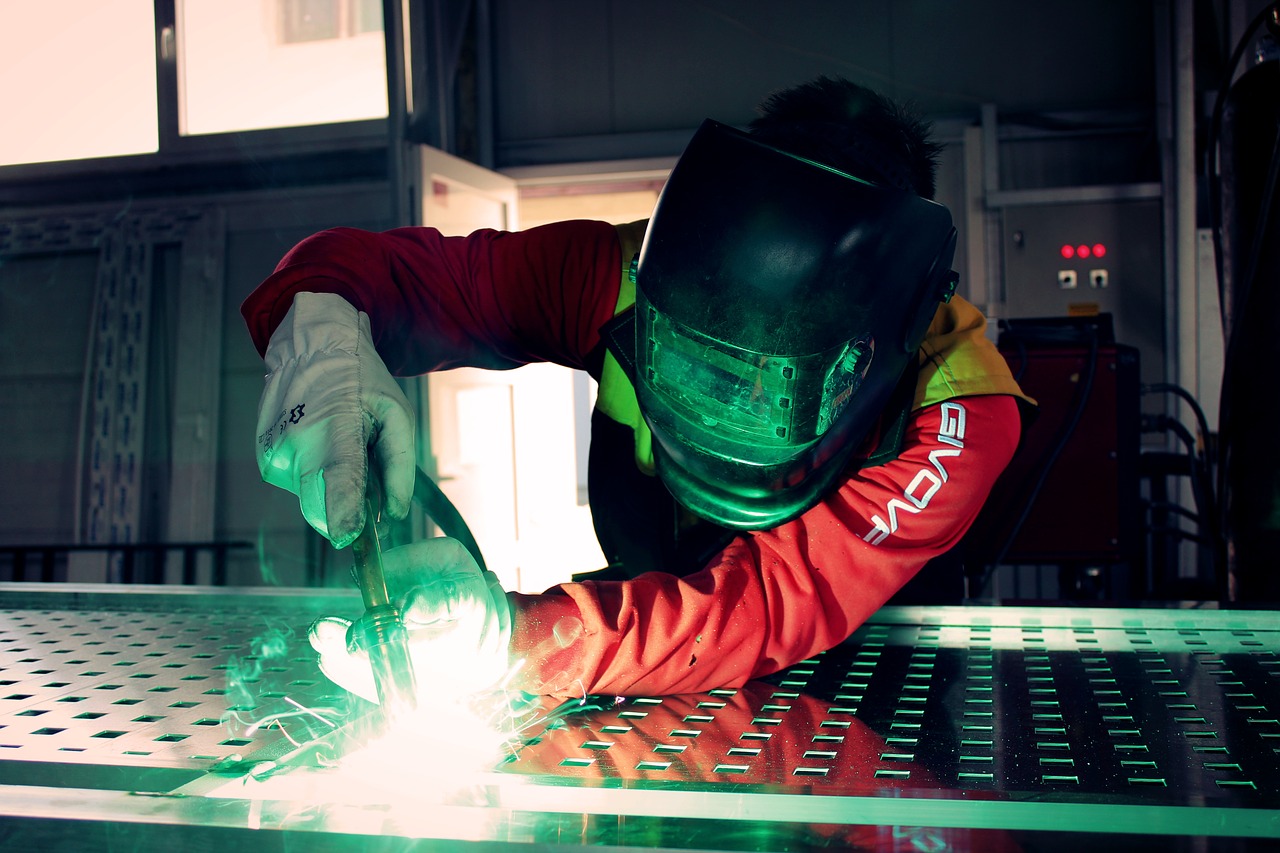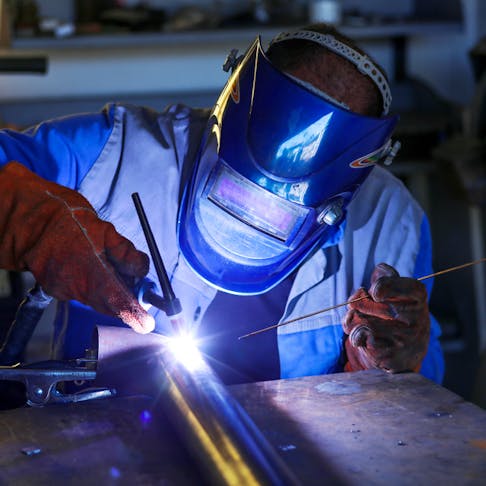Usual Welding Fixing Issues and How to Address Them Successfully
Welding repair services typically encounter a variety of concerns that can endanger the stability of the final item. Common problems include inadequate penetration, porosity, and misalignment, amongst others. Each defect provides unique difficulties that call for specific methods for resolution. Understanding these concerns is essential for welders intending to boost their skills and outcomes. This discussion will certainly explore these usual welding repair problems and effective methods to address them.
Insufficient Penetration
Insufficient penetration occurs when the weld steel falls short to fully fuse with the base material, resulting in weak joints and possible structural failures. This issue often comes from insufficient warm input, wrong electrode angle, or incorrect welding rate. Welders might experience poor infiltration because of a mistake of the essential parameters for a specific material density or kind. Furthermore, contamination on the base product's surface area can hinder effective bonding, worsening the trouble. To deal with insufficient penetration, welders must guarantee ideal setups on their equipment and keep a tidy job surface area. Routine inspection of welds is suggested to identify any kind of deficiencies early, enabling prompt improvements and the prevention of endangered architectural stability in bonded assemblies.
Porosity
Porosity is a typical flaw in bonded joints that manifests as tiny gas bubbles entraped within the weld metal. This flaw can endanger the stability of the weld, leading to decreased stamina and potential failing under tension. Welding. Porosity normally develops from contamination, dampness, or incorrect welding strategies, which permit gases to run away into the liquified weld pool. To resolve porosity, welders ought to guarantee proper surface area preparation, maintain a tidy functioning setting, and use suitable welding criteria. Furthermore, picking the best filler material and shielding gas can mitigate gas entrapment. Normal assessment and screening of welds can assist recognize porosity early, ensuring prompt rehabilitative actions are taken, thereby maintaining the top quality and reliability of the welded framework
Misalignment
Misalignment in welding can emerge from different factors, consisting of incorrect configuration and thermal growth. Recognizing the origin creates is essential for reliable resolution. A number of correction techniques are available to realign parts and guarantee architectural stability.
Reasons for Misalignment
Welding imbalance usually stems from a selection of underlying issues that can jeopardize structural stability. One key reason is inappropriate fit-up of elements prior to welding, which can bring about spaces and unequal surfaces. Variations in thermal expansion during the welding procedure can additionally cause distortion, specifically if the materials being signed up with have different coefficients of growth. Additionally, insufficient fixturing and securing may fall short to hold elements securely in area, bring about motion during welding. Inadequately conserved devices, including welding equipments and tools, might present incongruities in the weld grain, further adding to misalignment. Driver error, stemming from inadequate training or experience, can additionally play a considerable duty in producing misaligned welds.

Modification Techniques Readily Available
Addressing misalignment properly needs a mix of rehabilitative strategies customized to the specific issues at hand. One usual method is making use of jigs or components to hold elements in the right position throughout welding, guaranteeing consistent positioning. Furthermore, pre-heating the materials can help in reducing distortion and boost fit-up. For substantial misalignment, mechanical realignment methods, such as using hydraulic jacks or clamps, can be employed to deal with the position before welding. Post-weld warm therapy may likewise be required to eliminate tensions created by misalignment. Cautious evaluation and change during the setup stage can stop imbalance problems from coming to be considerable problems, advertising a smoother welding process and enhancing total structural honesty.
Distortion
Distortion is an usual challenge in welding that can arise from numerous variables, including uneven heating and air conditioning. Comprehending the root causes of distortion is essential for implementing effective avoidance strategies. Resolving this concern not only enhances structural honesty but also improves the total high quality of the weld.
Sources of Distortion
When based on the extreme warmth of welding, materials often go through adjustments that can result in distortion. This sensation mainly develops from thermal growth and contraction throughout the welding process. As the weld area warms up, the material broadens; upon cooling, it contracts, which can create interior stress and anxieties. Additionally, unequal heating throughout a work surface can aggravate these tensions, causing warping or flexing. The sort of product additionally plays a significant duty; steels with differing thermal conductivity and coefficients of development might respond in a different way, leading to uncertain distortions. In addition, poor joint layout and poor fixturing can add to misalignment during welding, enhancing the possibility of distortion. Recognizing these reasons is essential for efficient welding fixing and avoidance techniques.
Avoidance Techniques
Efficient prevention methods for distortion throughout welding concentrate on regulating warm input and making sure proper joint layout. Preserving a consistent warm input helps to decrease thermal growth and contraction, which can result in distortion. Utilizing techniques such as pre-heating the work surface can also reduce the temperature level slope, promoting consistent heating. Additionally, choosing appropriate joint styles, such as T-joints or lap joints, can improve security and lower stress and anxiety focus. go to this website Applying appropriate fixturing to safeguard the work surfaces in position better help in preserving alignment throughout the welding process. Lastly, staggered welding sequences can disperse warm much more uniformly, avoiding local distortion. By using these strategies, welders can greatly decrease the chance of distortion and improve the total high quality of their welds.
Splitting
Breaking is a typical issue experienced in welding fixings, frequently resulting from numerous elements such as improper air conditioning prices, product choice, or insufficient joint preparation. The event of fractures can considerably jeopardize the integrity of the weld, resulting in possible failings throughout procedure. To address this issue, welders should first analyze the source, ensuring that materials work and properly selected for the particular application. Furthermore, managing the cooling price throughout the welding procedure is necessary; quick air conditioning can generate stress and anxiety and bring about breaking. Proper joint design and prep work also contribute to lessening the risk. Implementing these methods can enhance weld quality and longevity, inevitably decreasing the likelihood of breaking in ended up weldments.

Insufficient Blend
A significant concern in welding repair services is insufficient fusion, which takes place when the weld metal does not properly bond with the base product or previous weld passes - Welding. This flaw can cause weak points in the joint, possibly jeopardizing the integrity of the bonded framework. Factors contributing to insufficient combination include not enough heat input, incorrect welding strategy, and contamination of the surface areas being signed up with. To address this problem effectively, welders need to guarantee proper pre-weld cleansing and surface prep work, in addition to adjust their welding criteria to accomplish adequate penetration and fusion. Regular examination throughout the welding procedure here are the findings can likewise assist recognize insufficient fusion early, permitting prompt restorative procedures to boost the general high quality of the weld
Overheating
While welding repair services can improve structural integrity, overheating presents a considerable difficulty that can cause material degradation. Excessive warmth throughout welding can change the mechanical residential or commercial properties of steels, leading to decreased stamina, raised brittleness, and warping. This phenomenon is specifically critical in high-stress applications where architectural integrity is critical. Determining getting too hot can involve aesthetic assessments for discoloration or distortion, as well as keeping track of temperature level throughout the welding procedure. To reduce the risks connected with overheating, welders ought to utilize suitable strategies, such as managing warm input, readjusting traveling speed, and using appropriate filler materials. Additionally, implementing pre- and post-weld warmth therapies can assist recover material residential properties and enhance the general high quality of the repair work, making certain lasting performance and safety and security.
Regularly Asked Inquiries
What Are the Common Signs of a Welding Problem?

How Can I Check My Welds for Quality?
To examine welds for top quality, one can use aesthetic evaluations, ultrasonic screening, and radiographic approaches. Each method ensures architectural stability, recognizes issues, and verifies adherence to specified criteria, ultimately boosting the integrity of the bonded joints.
What Safety and security Precautions Should I Take While Welding?
When welding, one ought to prioritize safety by wearing appropriate individual safety devices, guaranteeing proper ventilation, securing combustible products away, preserving a clean office, and understanding environments to protect against accidents and injuries.
Can I Fix a Weld Without Renovating the Entire Joint?
Repairing a weld without remodeling the whole joint is feasible, relying on the damage (Montana Mobile Welding and Repair Belgrade). Techniques such as grinding, adding filler material, or using a welding process can properly attend to specific flaws while protecting the surrounding framework
What Equipment Are Important for Efficient Welding Repair Works?
Essential devices for effective welding repair work include a welding machine, cable brush, mill, safety gear, clamps, and filler products. Each tool plays an imp source essential function in making certain top quality and safety during the repair service process. Porosity normally arises from contamination, wetness, or inappropriate welding methods, which permit gases to leave into the liquified weld pool. Badly maintained devices, including welding machines and devices, might present variances in the weld bead, more contributing to misalignment. When subjected to the intense heat of welding, materials often go through changes that can lead to distortion. Splitting is a common issue experienced in welding repair work, typically resulting from different factors such as incorrect cooling rates, material option, or poor joint prep work. A significant concern in welding repair services is incomplete fusion, which occurs when the weld steel does not properly bond with the base material or previous weld passes.